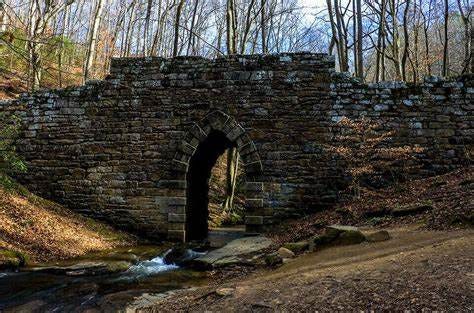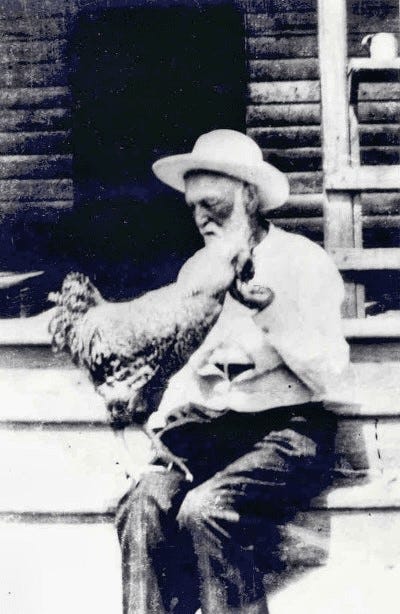"The Dark Corner"
Explanation and a little history of the origins of what is considered the "Dark Corners" of South Carolina.

The elusive name the “Dark Corner” has several potential origins. One school of thought dates back to 1872, following the Civil War, during which time this particular region of South Carolina was known for political unrest. At a campaign meeting, a politician was standing on a cart speaking to a crowd. His message was less than well-received, so some of the men in the crowd took the cart and ran with it, referring to the incident as a politician in tow. The speaker fell out, and is quoted as standing up and saying, “You people up here are in the dark – you don’t understand what’s going on.”
The most widely accepted history of the name comes from 1832 during the Nullification Crisis, when South Carolinians were deciding whether to nullify federal tariffs imposed by Andrew Jackson’s administration. SC legislature eventually voted in favor of nullification, but one precinct in Greenville County, Glassy Mountain Township, was strongly opposed by a vote of 169 to 1. In a speech addressing the matter, a local politician is quoted as saying, “The bright light of nullification will never shine in that corner of South Carolina.”
However, it came to be, the ‘Dark Corner’ has a very storied past. For hundreds of years, the land belonged to the Cherokee Nation. In the Treaty of DeWitt’s Corner in 1777, they were forced to cede most parts of Oconee, Pickens, Anderson, and Greenville counties. Battles of the American Revolution were also fought here, like the Battle of Earle’s Ford in 1780, which had its beginning at Gowen’s Fort.
A handful of mills dating back to the early 1800’s still stands throughout the “Dark Corner” marking the importance of crops like corn and wheat. Moonshining is an undeniable part of the Dark Corner’s history, and the practice surged during the Reconstruction era, when struggling farmers realized they could make significantly more money by using their grains to make alcohol. To avoid government taxation of liquor, moonshiners would often hide their stills in the mountains.
Today, the Dark Corner exists as a beautifully lush and proud mountain community and is in the northwest section of Greenville County around the Glassy Mountain with many horse ranches and affluent communities.

Throughout the 19th century, South Carolina was home to six additional counties containing a ‘dark corner.’ And their reasons for being called such didn’t always mean what we think of when we think of the Greenville County place as being mysterious, foreboding, and possibly lethal.
In 1836 the Charleston Daily Courier noted that the town of Edgefield located in Edgefield County was called the dark corner “in times of old, because of its ignorance and dissipation,” but did not imply that the place was unusually dangerous.
The term was floating around in the culture of the time: in 1841, The Charleston Mercury applied the phrase generically: ‘New Hampshire is a dark corner,’ groaned the whole Southern whig press when the democratic ticket succeeded there. Ignorant, yes, but was not necessarily dissipated or dangerous.
Even fifty years later to call a place ‘a dark corner’ still provoked outrage in the recipients of the insult: In referring to the campaign meeting last week at Springfield, South Carolina, the News and Courier heads its article ‘The Doings of a Dark Corner,’ a citizen from that town wrote:
“Our contemporary is mistaken. Springfield is not a dark corner by any means, and it is a slander for the News and Courier or any other paper to so speak of it. It is a live, progressive town filled with a lot of live, progressive people.”
Fairfield County contained a dark corner so named for its “umbrageous recesses,” its thick canopy of shade. We might think of Germany’s Black Forest in a similar fashion today. This dark corner was located in the northwest section of Fairfield County, centered around the town of Feasterville.
Likewise, the Yorkville Enquirer presents its dark corner in York County, about 13 miles west of Yorkville, as ‘that beautiful section.’
“Not many years ago, one of our good old Presbyterian ministers called this section the “Dark Corner” writes an un-bylined columnist from Cotton, SC under ‘Dots from the Dark Corner’ in the same paper in January 1894.
In a column several months later, he clarifies:
“In the year 1876 one of our good old preachers said that the northwest corner of Chester County, and the southwest corner of York up and down Broad River from Bullock’s to Turkey Creek was the Dark Corner.
By the 1870s The Intelligencer of Anderson County reported regularly on its Dark Corner Township, in the southern corner, yes, but not anything out of the ordinary.
“Mr. Editor, I happen to know who named the Dark Corner,” stated an M.C. Lindsay in a March 29, 1889, letter to the editor of that newspaper. “My father, A.J. Liddell, Esq., was assessing in that portion of the then Pendleton District. He came to a house or a cabin, went in and inquired for the gentleman of the house. The woman told him her husband was not at home, and asked, “What do you want with my old man?” “I merely want him to give in what he is worth.”
“Well, who sent you here to know what we are worth?” “Congress.”
“Well where does Mr. Congress live?”
By that time my father, the Assessor, was amused, and Col. Elias Earle was at that time our member in Congress. He told her Mr. Congress lived at Centreville.
“Well, you tell him my old man will come up and give him a whipping.”
“When my father came home, he told Coronel Earle to look out and told him the conversation. Colonel Earle said that was the Dark Corner of the Pendleton District. He said he would dodge the whipping by denying the name of Congress.”

Abbeville County had a ‘dark corner’ but it wasn’t considered threatening in any way.
“There was a little one-horse excursion from Vinegar Station to our city on Saturday eve,” noted the Abbeville Press and Banner on June 23, 1886. “The brave sons and fair daughters of the ‘Dark Corner’ spent the time while here in taking in the town.”
As with Anderson County, Abbeville County’s dark corner was in the extreme southeast corner of the county and was also known to locals as ‘The Range.’
“We are unable to say whence these names, or how they ever came to be applied to that section,” wrote an Abbeville resident in a letter to the editor of the Abbeville Press and Banner in 1856. “But whatever may have been their past signification[sic], he would be most egregiously mistaken, who would suppose now that the citizens of that section were dark, either morally or intellectually.”
Pickens County, directly adjacent to Greenville County, and settled by the same types of Scots-Irish Revolutionary War settlers, is the one place in this list whose dark corner sounds almost exactly like the famous dark corner of its neighbor.
“We learn that on the 19th instant, Deputy Marshals Madison F. Mitchell and James A. McKee were fired upon, both wounded, and Mitchell fatally,” reported the Daily Phoenix (Columbia, SC) on June 23, 1872. “The officers had just made a descent upon an illicit distillery in the dark corner of Pickens County, near Table Rock.”
Note that this Pickens news item spells out in which SC county its ‘dark corner’ is located. During this time, about the 1870s newspapers began to clarify to readers which ‘dark corner’ they meant. One 1877 letter to the editor of the Union Times refers to the ‘dark corner of North Pacolet in Union County, but it wasn’t long before that ‘dark corner’ became codified as the ‘dark corner of Spartanburg County.
Newspaper references to the “dark corner of Greenville County” begin to appear regularly in the 1890s and continue on right till the modern day.
As early as 1902, newspapers began to drop the ‘of Greenville County’ portion of the phrase, knowing that their readership understood what they were referring to by the ‘dark corner.’
“Greenville has had a survey made from some point in North Carolina, through this country by Landrum, through Polk County and the Dark Corner,” reported the Spartanburg Herald on November 18 that year, for example.
Greenville County’s dark corner was in the news so frequently by that time for killings, moonshine busts, and an array of lawless activity that its notorious reputation easily overshadowed earlier ‘dark corner’ designations elsewhere in the state, becoming sui generis.

Perry D. Gilreath, Captain, Company F, resigned from the Sixteenth S.C.V. (South Carolina Volunteers) in April of 1863. Captain Gilreath then joined the cavalry with the Army of Northern Virginia. He would ride with Major General Matthew Calbraith Butler and General Wade Hampton III for the rest of the war.
Capt. Gilreath would be elected Sheriff of Greenville County at redemption in 1876 on the Hampton ticket. He would serve in that office until 1900. He was widely known and loved in the upper end of the county, the ‘dark corner’ and was one of the few law enforcement officers who could come and go as he pleased in the mountains. He outlawed public hanging, and his character was viewed as both humane and fair. Sheriff Gilreath had the greatest respect across all social and cultural lines and was considered the High Sheriff.
I hope you enjoyed this little bit of history why I named my publication Monica’s Dark Corner”. In no way, does my title imply my intentions are insidious by any means, only to let you understand the historical value of the name.








Monica thank you for this information. very interesting!